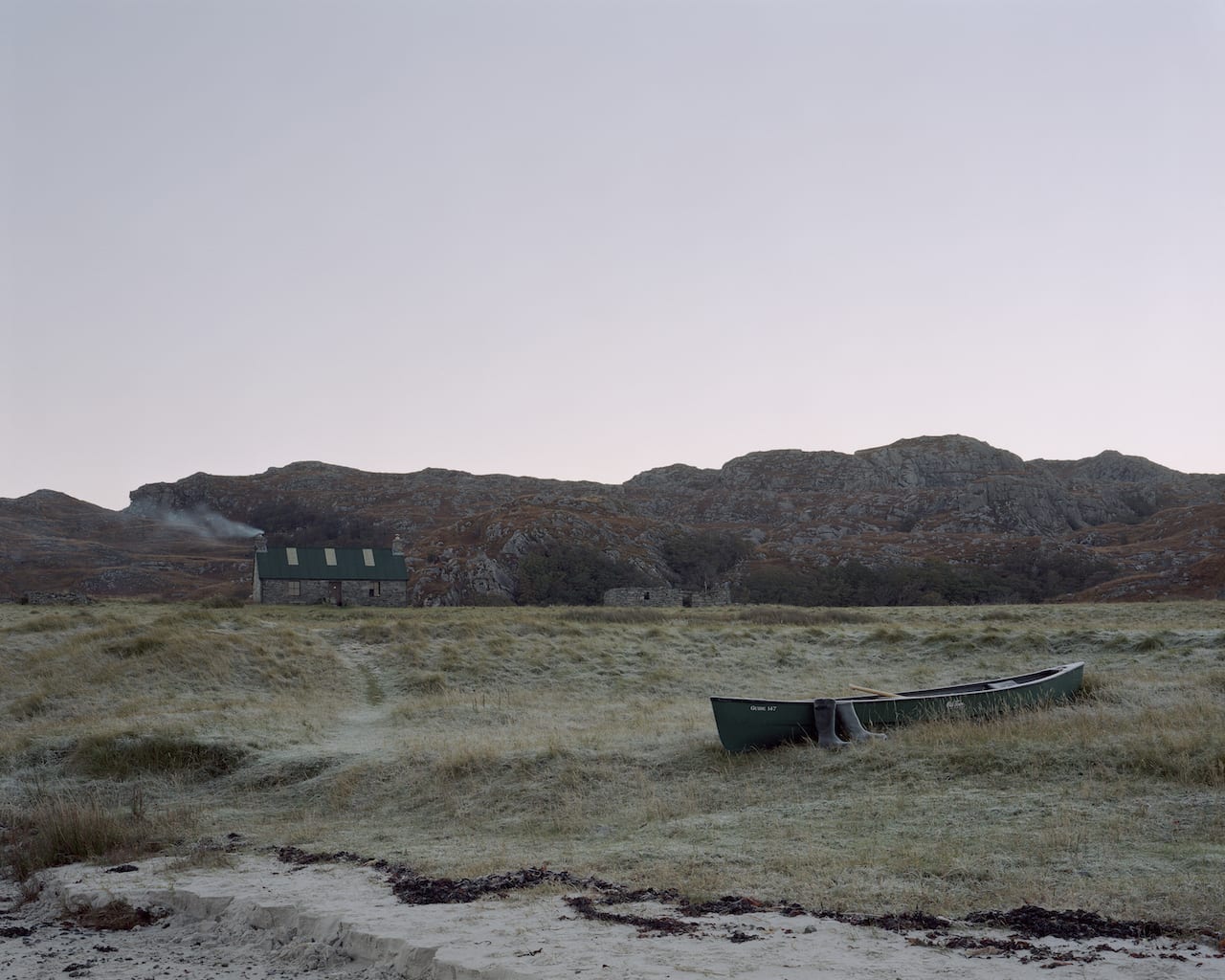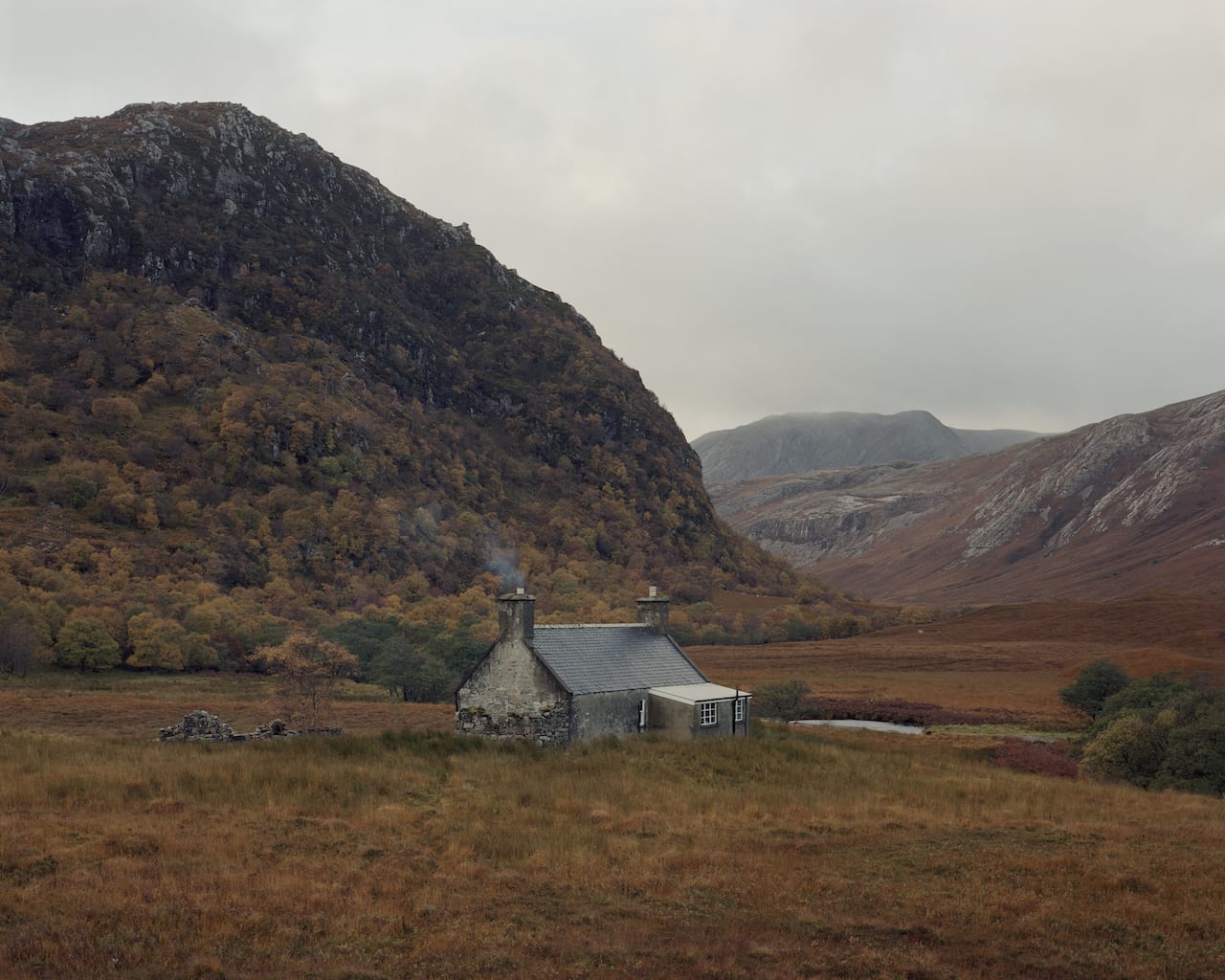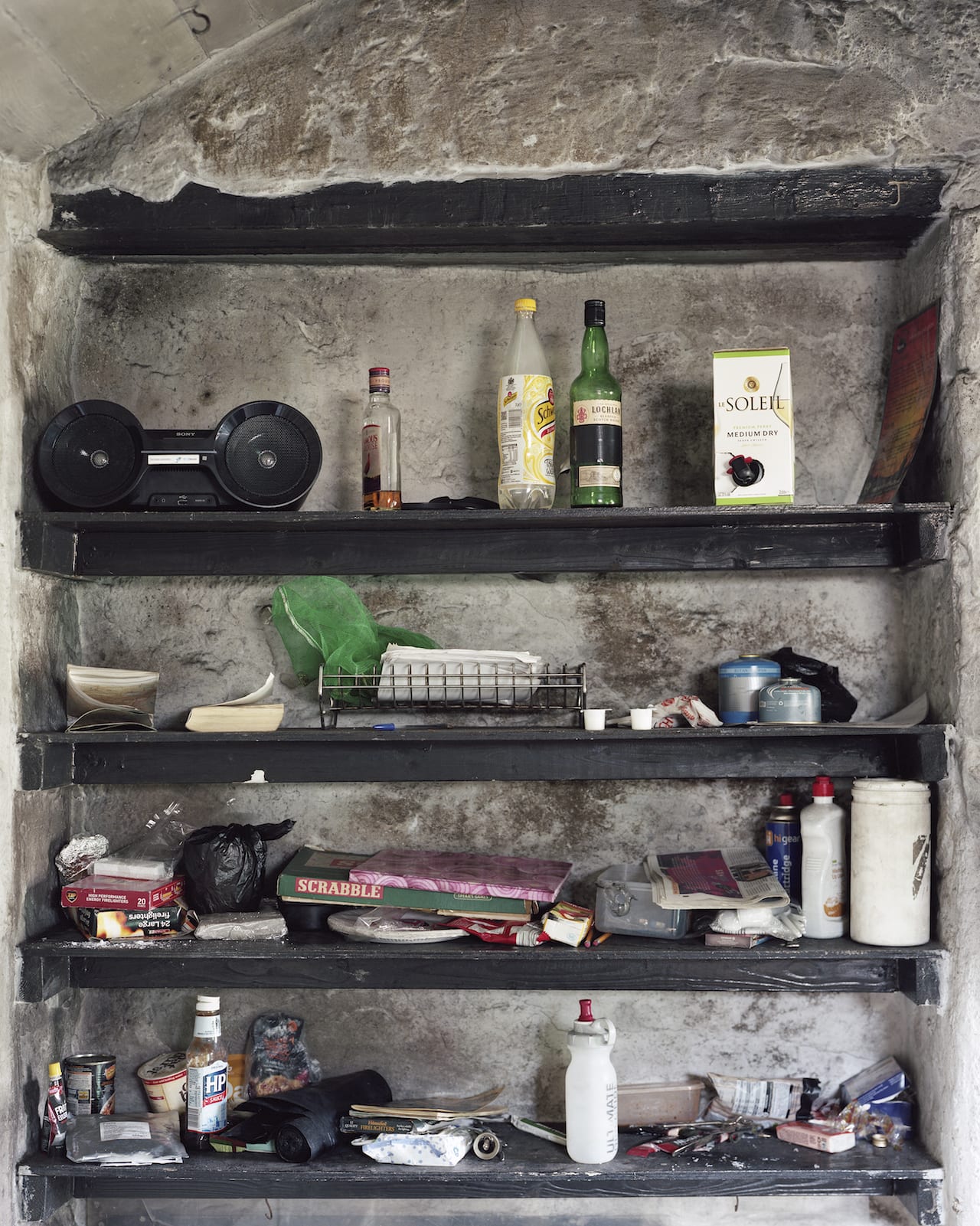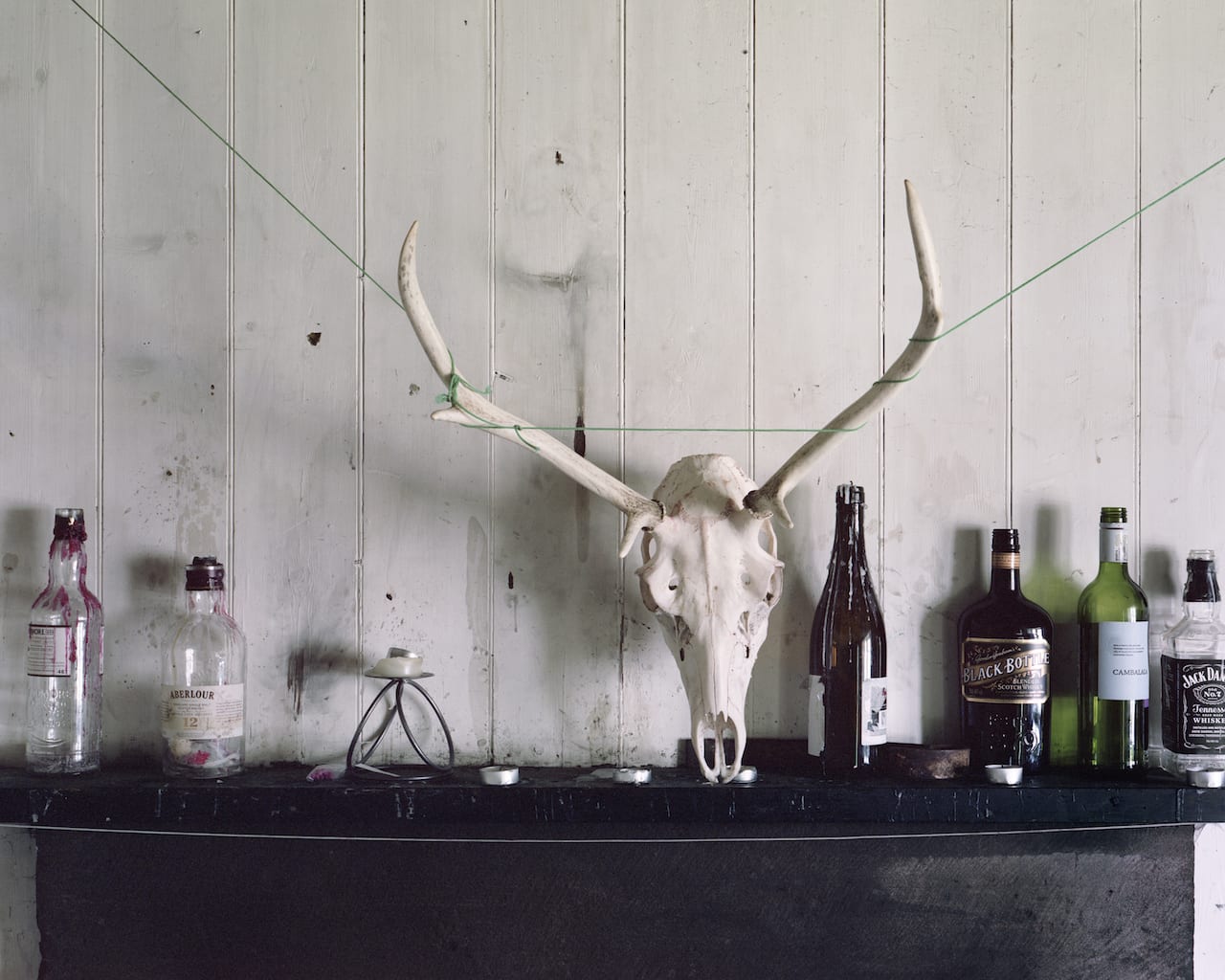The first night he spent in a bothy, a primitive and remote man-made shelter, Nicholas JR White witnessed a sight he would not forget in a hurry. He and a friend had arrived at Warnscale Head in the Lake District and were talking about the project that would become Black Dots – now a book published by Another Place Press – when they looked out of the window and saw the Northern Lights stretching far into the distance.
“We had the whole of the fells to ourselves and sat outside with beers, just watching,” says White. “That was the first night of the project and it was a really good start. The next day I got the first image that would make it into the series.”
Little did White know then that this would be the first of many nights spent in bothies across Scotland, Wales and northern England over the following three years. He first had the idea to make a project about these former crofters’ cottages and farmers’ huts, nestled deep in the landscape and often only accessible by foot, in 2013 while studying at Plymouth College of Art.
“I was coming to the end of my photography degree and was looking into hiking holidays as I’d never been to Scotland,” he explains. “I came across bothies and the more I read about them the more I thought they would make a really interesting project.”
So began White’s journey into the strange but wonderful world of bothying, which would see him travel the length of Britain, staying away from home for up to two weeks at a time. Kitted out during each trip with hiking gear and clothing, and equipped with provisions, White also took a large format camera loaded with colour negative film, which he used to shoot the project. His aim, he says, was to tell the story of these small huts, which remain unlocked and provide free shelter to all who use them, predominantly hikers.
Protected and preserved by the Mountain Bothies Association, they are basic in structure, appearance and facilities, although some have a small fireplace or a rough, raised platform that can be made into a bed. Despite this, they are surprisingly cosy once a fire and candles are lit, says White.
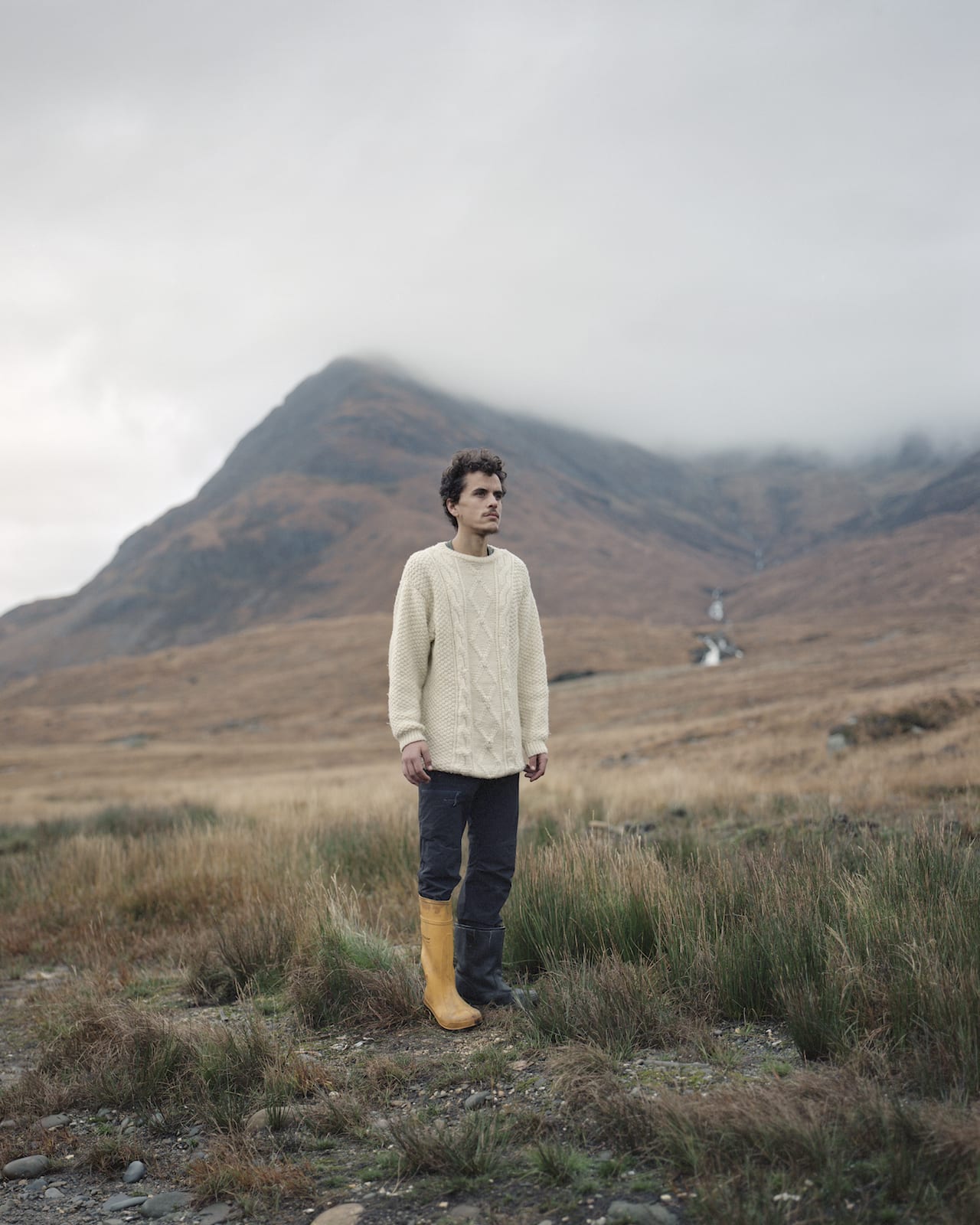
For the project, White estimates he visited around 20 bothies – “a small number,” he says, as “there are more than 100 in the UK”. Keen to move beyond an architectural survey, he also focused on the human side of bothy culture, making portraits of the people he met along the way, the ephemera and sparse decoration inside the buildings, and photographing the shelters amid expansive and often bleak landscapes.
A feel of what it means to be alone pervades the work, and the project is as much about White and the emotions he felt being in these environments as it is about bothies. “It’s about showing the vastness of the landscape and how small these places are, but you also want to know what’s inside,” he says.
“There’s a sense of distance and loneliness. I relish the opportunity to be out on my own in these landscapes and to reflect on them, so there is that in the work.”
nicholasjrwhite.co.uk Black Dots is published by Another Place Press, priced £16 https://anotherplacepress.bigcartel.com/product/nicholas-j-r-white-black-dots This article was first published in the March issue of BJP, available from the BJP shop www.thebjpshop.com
